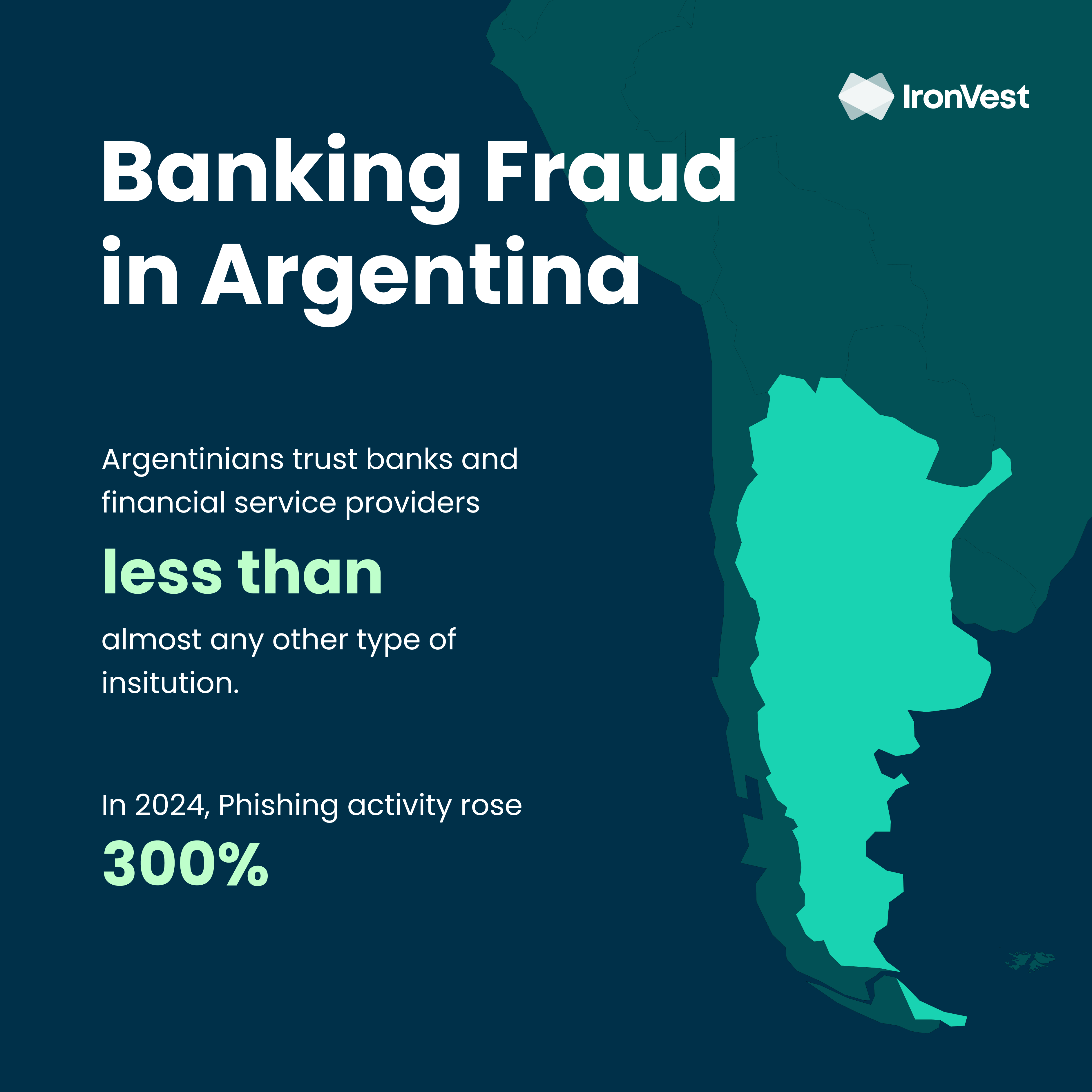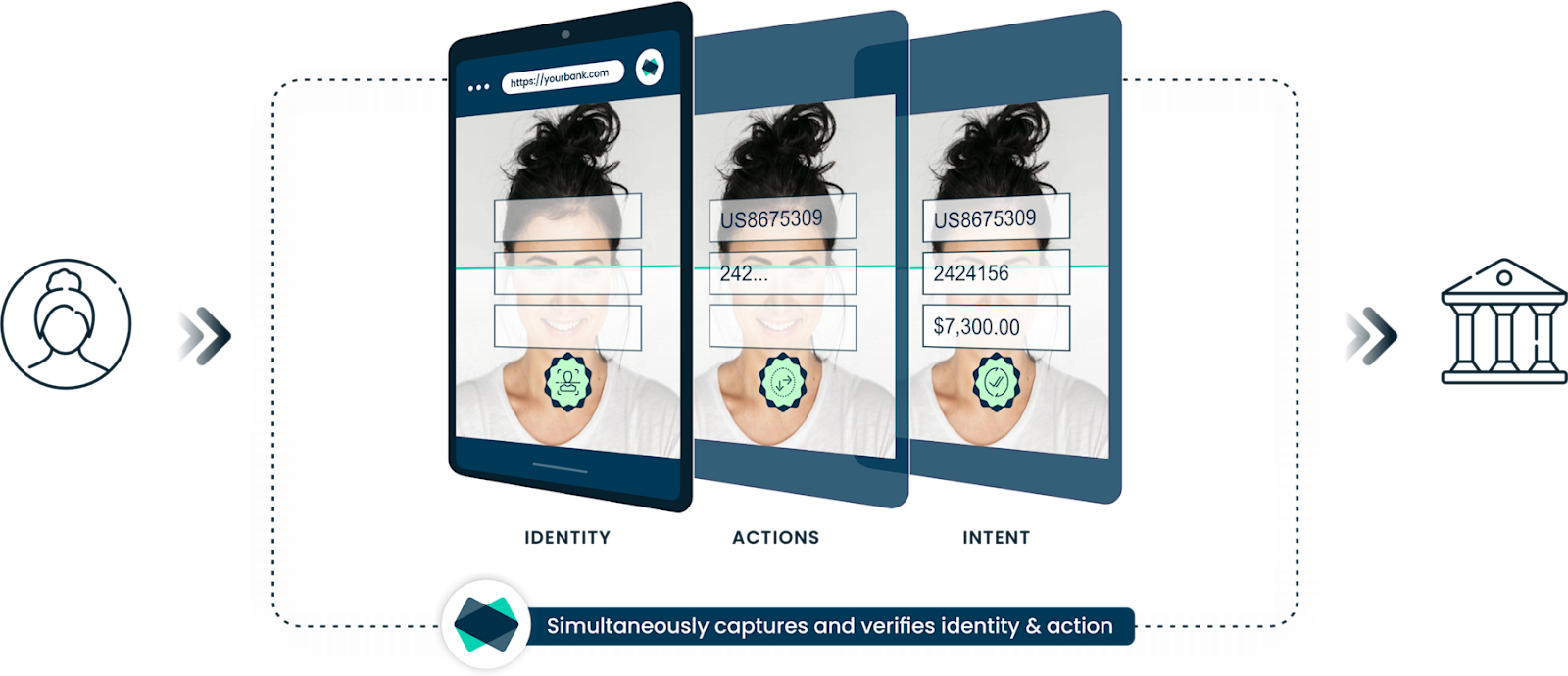What Will Stop Banking Fraud In Argentina In 2026?
November 05, 2025
As in much of Latin America, digital payments and online banking have surged in popularity in Argentina because they're easy, low-cost, and perceived as secure.
But Argentina stands out even among its neighbors.

A mix of deregulation and a digitally enabled population has led to a remarkable boom in Argentine financial services usage.
In 2024, 71% of adults held an account offered by payment service providers (PSPs). In 2019? Only 7% did.
However, this rapid shift toward digital banking has a downside: fraud is rising just as fast. Fraud complaints in Buenos Aires alone increased by over 43% in the last year, with the majority related to payment fraud.
In this article, we explore the latest data on banking fraud in Argentina to understand why it’s happening, which fraud vectors are driving the surge, and what banks and fintechs can do to fight back in 2026.
4 Fraud Types Argentine Banks Need to Watch In 2026
Our analysis of the global and Argentine banking fraud landscape highlights four key attack vectors that are likely to pose a significant fraud risk to Argentine banks in 2026.
1. Mobile Account Takeover
Fraud in Argentina, like elsewhere in LATAM, is overwhelmingly mobile-first. In the region as a whole, roughly 79% of all fraud sessions involve a mobile device.
Phishing campaigns targeting Argentinian banking customers via channels like WhatsApp and SMS are widespread. Their goal is typically to harvest credentials, including account logins and 2FA access codes, by pretending to be the customer’s legitimate banking services provider.
In fact, Argentina was among the LATAM countries that saw the greatest growth in phishing activity in 2024 (up 300%), underscoring how widespread these credential-harvesting attacks have become.
A consumer's credentials, once stolen, can be misused by attackers to take over accounts and move quickly through mule networks before detection systems catch up.
→ Learn about 10 bank account takeover fraud types and how to prevent them.
The scale of this problem has already prompted Argentina's major banks (Galicia, Naranja X, Santander) to launch a fraud intelligence sharing network in 2025. The initiative enables real-time sharing of behavioral and device signals to help identify suspicious receiving accounts.
However, this detection-focused response addresses the symptom, not the cause. Accounts are being taken over in the first place because authentication is broken. We explore this problem in more detail later in this article.
2. A2A payment scams
Argentina’s real-time account-to-account rails have exploded in use, which raises the stakes when social engineering is involved.
Under the BCRA’s Transferencias 3.0 framework, interoperable QR payments now dominate push transfers. The challenge for financial service providers is that A2A payments clear instantly and are hard to reverse, so authorized push payment (APP) scams thrive.
Regional analysts now call APP scams the fastest-growing fraud type in LATAM as a whole, as criminals coach victims to “approve” a transfer to mule accounts.
3. Deepfakes and Voice Cloning
Deepfake fraud risk is becoming very real for Argentine banks.
Globally, up to 85% of organizations faced deepfake-related incidents in the past year. Among Latin American countries, Argentina shows the greatest interest in deepfakes, as indicated by the highest volume of related Google searches.
The risk of deepfakes is particularly acute for banks. Advances in AI-generated voice cloning and deepfake video technology have made customer impersonation disturbingly easy.
The Directorate of Cybercrime of the Misiones Police recently warned that fraudsters need only a few seconds of recorded audio to convincingly clone a person’s voice - enough to bypass voice recognition systems used by banks.
→ Learn more about deepfake risks.
The threat of deepfakes affects every customer interaction channel. Call centers can no longer rely on voice biometrics to verify identity, and video KYC (Know Your Customer) systems that once seemed secure are now vulnerable to manipulation.
Banking customers might be duped, too. One of the most notable real-world deepfake incidents occurred in Argentina, where a woman was defrauded of £10,000 by an AI-generated “George Clooney.”
4. Cross-Channel Exploitation
In 2026, the most dangerous fraud won’t happen through a single attack vector.
Fraudsters can now use AI-driven tools to scale their campaigns cheaply and maintain consistent, convincing narratives across multiple channels. They can simultaneously probe call centers, branch locations, and digital platforms, exploiting whichever has the weakest verification process while keeping their story believable.
For a diverse financial services market like Argentina’s, this creates a major vulnerability: each channel often relies on its own security protocols, leaving gaps where they intersect.
A customer who’s strongly authenticated in a mobile app might face minimal verification when calling a contact center just minutes later - a weakness fraudsters exploit through strategic channel-hopping.
Argentina's Societal Trust Deficit Is Amplifying Fraud Risk
In Argentina, banking crises loom large in memory, so confidence in financial institutions is low by default. A 2025 study by the PR firm Edelman reports that Argentinians trust banks and financial service providers less than almost any other type of institution.
This distrust creates a dangerous gap. When banking customers can’t easily tell which communications are genuine, fraudsters can exploit the uncertainty through phishing, social engineering, and multi-factor authentication (MFA) bypass attacks.
The default response from banks and financial institutions has been to tighten fraud filters and block suspicious transactions. Across Latin America, 20% of all card transactions are declined by banks as fraudulent, which is twice the global average.
However, over-restriction carries its own risks. Analysis from companies like Stripe shows that stricter fraud controls often drive up customer churn. In an evolving market, institutions that habitually decline legitimate merchant transactions will struggle to remain competitive.
→ See what a great banking user experience looks like.
Every additional step or point of friction in the transaction flow risks losing customers. In competitive markets like Argentina, this means banks face a difficult choice: tighten security or preserve convenience. Getting the balance right will determine who wins banking customer trust.
Traditional MFA Is Failing Argentinian Banks
Traditional multi-factor authentication (MFA) tries to stop fraud by adding friction: SMS codes, authenticator apps, and security questions. While these methods slow down some attacks, visible authentication steps create three major weak points.
First, it trains users to expect interruptions, making legitimate security checks indistinguishable from scam attempts.
Second, SMS and email codes can be intercepted or socially engineered.
Third, when authentication is visible and predictable, fraudsters simply adapt their scripts to account for it.
Authentication needs to evolve to match how people actually use financial services today. As digital banking becomes more seamless, security must be equally seamless - stronger, but invisible.
Preventing Banking Fraud with Invisible Authentication
Fraud losses are rising globally, across LATAM, and within Argentina. Banks and financial institutions face mounting pressure to protect both themselves and their customers from escalating fraud.
The solution we offer banks is to prevent rather than just respond to fraud.

By making authentication continuous and invisible, your institution can reliably prevent fraudsters from taking over transactions or entire accounts before losses occur.
Invisible authentication prevents fraud.
Other solutions respond to fraud.
IronVest ActionID™ continuously authenticates users across all channels (digital, call center, and in-branch) without a single user interruption. There are no SMS codes to intercept. No predictable authentication moments for fraudsters to script around. No friction for legitimate customers.
Every interaction produces tamper-proof evidence of user intent, helping institutions not only prevent fraud but also verify accountability in disputed transactions.
We’re already helping banks across Latin America stop fraud in real time and capture exactly what customers saw and submitted when disputes arise.